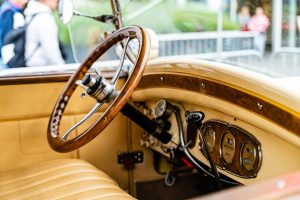How Vintage Cars are Restored to Perfection
If you’re a vintage car enthusiast, chances are you’ve daydreamed about the process of restoring a classic ride to its former glory. The thought of bringing a piece of history back to life is alluring, but the actual restoration process can often seem daunting and complex.
The Art of Retro Revival
Restoring vintage cars is a delicate art that requires patience, precision, and passion. It’s a labor of love that involves taking a piece of automobile history and breathing new life into it. The end goal is to have a fully functioning, show-worthy classic car that closely resembles its original state.
In today’s world of shiny, modern cars, vintage models stand out with their unique character and charm. And restoring them to perfection is more than just a hobby – it’s a form of preservation that keeps these automotive treasures alive for generations to come.
A Labor of Love and Patience
Restoring a vintage car is a meticulous process that requires careful planning and attention to detail. A major part of the restoration process involves sourcing the right parts and materials. Since vintage car parts are not readily available in stores, it often requires scouring through old car magazines, visiting junkyards, and even reaching out to collectors and other enthusiasts.
Depending on the condition of the car, the restoration process can take months, if not years. Every nut and bolt is inspected, cleaned, and replaced if necessary. The goal is to bring the car back to its original specifications, which involves removing any non-original parts and replacing them with period-correct components.
From Rust to Shine
The biggest challenge in restoring a vintage car is tackling the issue of rust. Most old cars have been sitting for years, exposed to the elements, which causes extensive rust and corrosion. Removing rust and repairing corroded metal can be a time-consuming and labor-intensive process.
One common method used to remove rust is sandblasting, which blasts tiny abrasive particles at high speeds to remove paint and corrosion from the metal. After the rust is removed, the metal is treated with special chemicals to prevent it from rusting again. The metal is then primed, painted, and polished to give it a shiny finish.
Preserving the Original Look and Feel
A crucial aspect of vintage car restoration is maintaining the car’s authenticity. This means keeping the car as close as possible to its original state, including the bodywork, interior, and paint color. Many vintage car owners opt to use traditional methods and materials, such as lacquers, rather than modern paints, to achieve an authentic finish.
The interior of the car is also meticulously restored, with worn leather and vinyl being replaced with new pieces that match the original design. The aim is to create a car that looks and feels like it just rolled out of the assembly line.
The Final Touches
After months of hard work and dedication, the end is finally in sight. The engine is rebuilt, the body panels are straight, and the interior is spotless. The final step is putting all the pieces together and fine-tuning every aspect of the car to ensure it runs smoothly and safely.
Once the car is deemed ready, it’s time for its first test run – a moment of truth for vintage car restorers. After all the hard work and long hours, the feeling of hearing the engine roar to life is indescribable. And finally, the car is ready to hit the show circuit and turn heads wherever it goes.
In Conclusion
Restoring vintage cars is a passion project that requires immense dedication, skill, and patience. It’s an art form that not only brings back a piece of history but also keeps it alive for future generations to appreciate. The process of restoring a vintage car to perfection is a journey of hard work and love, resulting in a timeless masterpiece on wheels.









